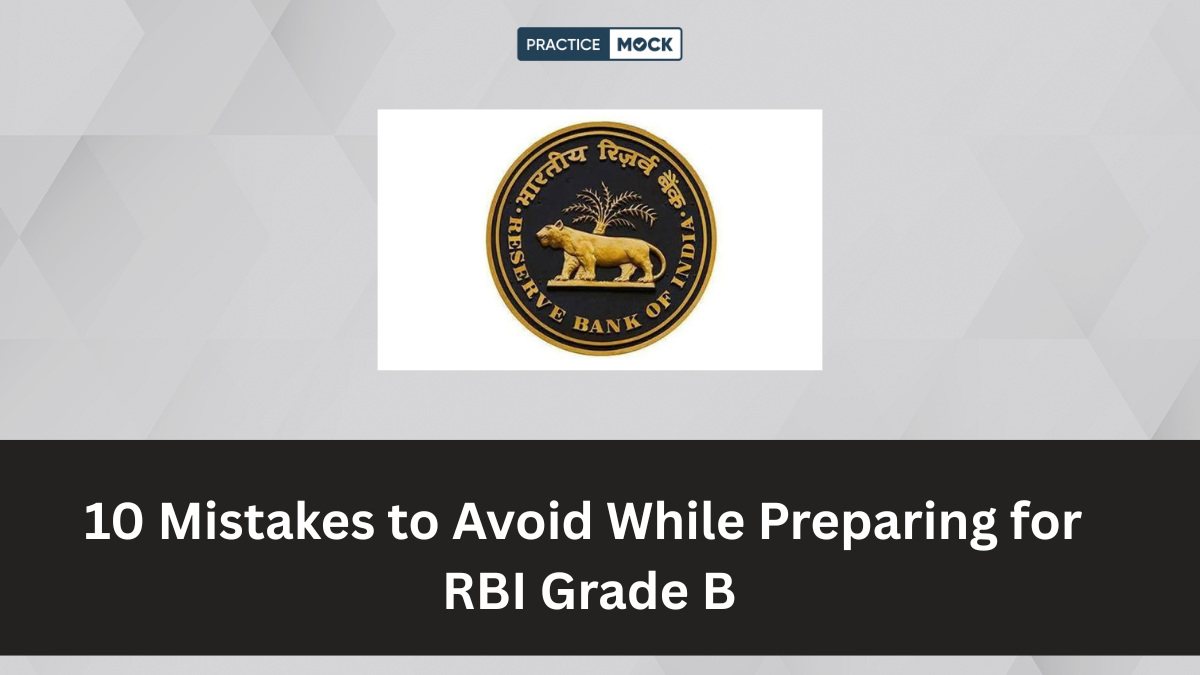Reading Comprehension For RBI Grade B Exam


Reading Comprehension For RBI Grade B Exam is scoring section for candidates want to get marks in English section. If we consider the past trends, we can get a majority of questions asked from Reading Comprehension section in RBI Grade B Phase 1 Exam. Candidates looking forward to begin preparation and practice for Phase 1 English Paper. You should not miss preparing for Reading Comprehension. In this topic, you get a passage with a set of objective-based questions to be attempted in English. If you master with your reading abilities then, it’s easy for you to fetch marks in English paper. Qualifying RBI Grade B Phase 1 becoming a tough nut to crack with surprising changes implemented in paper pattern from last years. This time don’t let yourself down with sudden shocks in paper. Be a pro to tackle Reading Comprehension For RBI Grade B Exam. Target those questions in which you can easily improve your scores to meet sectional and qualifying cut off needed in RBI Grade B Phase 1 Exam 2024.
3-Step Guide To Solve Reading Comprehension For RBI Grade B
You have limited time to face 200 questions in 120 minutes in RBI Grade B Phase 1. A quick plan to attempt and get accurate attempts in Reading Comprehension for RBI Grade B. So that, you can improve your scores in sectional and overall in Phase 1. We mentioned a 3-Step Guide for candidates convenience to begin solving Reading Comprehension for Phase 1. Follow our guide to solve 1 to 2 questions regularly boosting your speed and accuracy for exam.
Step 1: Read The Comprehension Passage
Candidates should check information mentioned in Reading Comprehension for RBI Grade B Phase 1. Take a quick recap to know the details so that, it becomes easy in attempting questions for exam. Make a habit to read newspapers and editorials online to know tone of passages.
Step 2: Try To Sense Reading Comprehension Passage Tone
Push yourself to prepare a routine schedule to enhance your abilities in attempting Reading Comprehension questions. Choose you to read editorial available online so that, you can be a pro in sensing the tone of passages asked in the paper. You need to be quick enough to get all questions correct in 5 to 7 minutes time.
Step 3: Read & Understand Questions
Take a look at the comprehension questions on reading the passage. Attempt the questions while reading the passage. So that, you are left with time to manage tricky sections Reasoning and Quantitative Aptitude in RBI Grade B Phase 1 Exam 2024. Start your practice for Reading Comprehension as the exam is on 8th September 2024.
Reading Comprehension Question For RBI Grade B Exam
Sometimes, being part of a large crowd can be worse than uncomfortable: it can turn lethal. Deadly crowd crushes that occurred in 2017 include incidents in an Angolan football stadium, an Italian piazza, and a Moroccan food aid centre. These events are tragic and mostly avoidable. Scientists in the UK and around the world are figuring out new ways to minimise the chance of them happening again. Most of human behaviour is very predictable because we are very rational beings, says Shrikant Sharma. This predictability allows data analysts to envision how people will move through space and how that can be affected by changes to their environment.
Crowd psychology has been around since the 19th century. But it has only been in the last few decades that there has been a major shift to seeing crowds as more than mindless masses. “The crowd is as psychologically specific as the individual,” says the University of Sussex’s John Drury, an expert on the social psychology of crowd management. In the 1980s, psychological findings were applied to riots, in the 2000s to mass emergencies, and in the 2010s to music festivals and large events. Now, crowd psychology is being used in more specialised emergencies, such as CBRN (chemical, biological, radiological, or nuclear) attacks. In fact, the work of psychologists and disaster specialists shows that a collective identity often emerges during emergencies. This identity is key to determining how cooperative and resilient a crowd will be in a given situation. In their interviews with survivors of the 2005 7/7 London bombings, for example, Drury and colleagues found that there had been lots of cooperation between members of the crowd: they comforted each other, shared water, and provided basic first aid.
“It is important not to do things that would undermine the emergence of this shared kind of social identity,” Drury says. Because crowd identity comes to supersede other affiliations, for example, it would be unhelpful to divide the crowd into religious or ethnic groups in the hope of making it more manageable. These findings have been integrated into the emergency response guidelines of organisations like the UK’s National Health Service (NHS). It is also key to understand the ‘rules’ that govern a given kind of crowd. Take moshpit behaviour at a punk or metal gig. There is a logic to this seething mass of bodies, though it might not be visible to outsiders. This logic keeps fans from being trampled. Remarkably, it even means that moshers moving in a rough circle often end up right where they started. “Crowd safety managers know that when you see slam dancing and moshing, that is rule-bound,” Drury says. But if inexperienced security officers who don’t know the scene assume that this behaviour is dangerous and start applying physical force, this could be what actually makes the situation dangerous. This happened in the 1989 Hillsborough disaster, when 96 people died after being crushed in a football stadium in Sheffield, UK. Some police and stewards were so preoccupied with possible hooliganism that their actions, like penning fans into tight packs, made things worse.
From a psychological standpoint, it is also important not to overstate the dangers of crowds. Drury explains that despite how rare disasters are, the media and popular culture often exaggerate the dangers. It is more dramatic for storytelling purposes to use a term like “panic” rather than “sudden evacuation”, for example, even though mass panic is rare. The problem is that if people are primed to believe that others will panic in a crowd, they are more likely to panic themselves, even in the absence of actual danger.
Sometimes recommendations are even simpler. One Newcastle school faced a crush of students each time the school bell rang. Sharma’s team watched students struggle to walk down a corridor in multiple directions. They realised that the school’s idea of widening the corridor would be both unnecessary and costly. Instead, Sharma’s team recommended something far simpler: get rid of the school bell. Once teachers were able to wrap up their lessons within a range of a few minutes, classes did not all let out at precisely the same time. Suddenly, moving down the corridor was relatively smooth. As a result, even in places with limited resources, Sharma believes that asking the right questions could help avoid crowd crushes. Mumbai’s train stations are notoriously overcrowded, for instance. Ensuring that correct information is shared, and paying attention to how passengers are diverted from the exits could help avoid tragedies like the 2017 stampede on the stairs of Elphinstone Road station, which resulted in at least 22 deaths. Despite the progress that crowd management science has made, there is still more scope for improvement. Crowds are surprisingly complex and sophisticated. But so, increasingly, are techniques for understanding them.
Which of the following loosely translates to what the author is trying to convey in the first paragraph of the passage?
(A) One is safe at all times among a large group of people.
(B) The dangers one is exposed to in crowds cannot be curtailed.
(C) The behaviour of humans can predict their movements in changing environments.
(D) Most of the time, people have a tendency to act unreasonably.
(E) One particular kind of behaviour is usually not repeated among large groups of people.
Ans: C
Solution: In the passage, the author has suggested that humans behave in a very predictable manner and that their behaviour can be used to visualise how they would move when changes take place in their environment. Refer to the lines in the passage, “Most of human behaviour is very predictable because we are very rational beings. This predictability allows data analysts to envision how people will move through space and how that can be affected by changes to their environment.” The statement in C most closely resembles this. Thus, C is the right answer.
The same quoted lines make statement D incorrect, which states that humans often behave in an irrational way.
A is incorrect because the author has mentioned that, at times, being in crowds can be uncomfortable and even deadly. Refer to the line in the passage, “Sometimes, being part of a large crowd can be worse than uncomfortable: it can turn lethal.”
B is incorrect because the author has mentioned that deadly crowd crushes can be avoided. Refer to the line in the passage, “These events are tragic and mostly avoidable.”
E is neither mentioned nor implied in the passage.
What does the author want to convey through the example of moshpit behaviour at a punk or metal gig?
(A) that the crowds at music festivals are aggressive
(B) that crowds defy reasoning and logic
(C) that the logic followed by crowds at such events leads to disasters
(D) that a particular kind of crowd follows a certain logic
(E) that crowd safety managers are ignorant of how the crowds at huge events behave
Ans: D
Solution: Refer to the lines in the passage, “It is also key to understand the ‘rules’ that govern a given kind of crowd. Take moshpit behaviour at a punk or metal gig. There is a logic to this seething mass of bodies, though it might not be visible to outsiders.” We can conclude from these lines that the author has mentioned the example of moshpit behaviour at a punk or metal gig to emphasise the fact that there are certain rules that determine the behaviour of a particular kind of crowd. The clause in D most appropriately conveys this. Thus, D is the right answer.
The same quoted lines make statement B incorrect.
A is incorrect, as it is not mentioned in the passage.
C is incorrect, as it has been mentioned in the passage that such a logic prevents incidents of tramplings. Refer to the line in the passage, “This logic keeps fans from being trampled.”
E is incorrect, as it has been mentioned in the passage that crowd safety managers are aware of such rule-bound behaviour. Refer to the line in the passage, “Crowd safety managers know that when you see slam dancing and moshing, that is rule-bound.”
Recent Posts
IBPS PO Syllabus 2025, Check Prelims & Mains Pattern
IBPS PO Syllabus 2025 will be released along with a notification pdf. Candidates can check…
IBPS PO Exam Pattern 2025, Prelims & Mains Format Explained
IBPS PO 2025 Prelims and Mains explained! Check pattern, total marks, section-wise questions, and duration…
IBPS PO Prelims Preparation Strategy 2025
Master the IBPS PO Prelims 2025 with a clear, focused strategy. Learn how to plan,…
How to Prepare for IBPS PO Exam at Home?
Unlock the secrets to successful IBPS PO preparation at home. Get expert strategies, free resources,…
How do I prepare for Quant for the IBPS RRB PO 2025? Check Prelims & Mains Detailed Strategy
Here we are providing Topper strategy to preparation IBPS RRB PO Quant Section, Candidates can…
IBPS PO General, Economy/Banking Awareness Topic-wise Weightage 2025
IBPS PO 2025 General Awareness made easy! Learn topic-wise weightage, expected questions, and smart tips…


